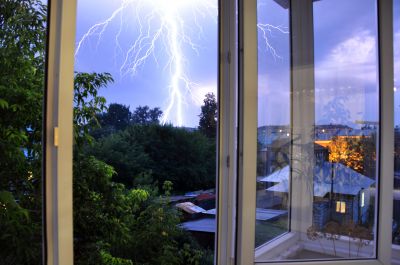Leading Storm Damage Restoration Products For Homeowners
Select from essential supplies designed to assist homeowners in restoring their property efficiently after storms.
 Storm restoration projects in Dade City, FL, often require a comprehensive selection of products to address the diverse challenges posed by severe weather conditions. From repairing damaged roofing to reinforcing structural elements, the right tools and materials are essential for effective restoration. Choosing appropriate products can help ensure safety, durability, and long-term resilience against future storms. It is important to consider the specific needs of each project, including the extent of damage, the types of materials involved, and local building codes.
Storm restoration projects in Dade City, FL, often require a comprehensive selection of products to address the diverse challenges posed by severe weather conditions. From repairing damaged roofing to reinforcing structural elements, the right tools and materials are essential for effective restoration. Choosing appropriate products can help ensure safety, durability, and long-term resilience against future storms. It is important to consider the specific needs of each project, including the extent of damage, the types of materials involved, and local building codes.
Top Overall Option
Heavy-Duty Weatherproofing Tarp
A versatile, durable tarp designed to provide temporary protection for damaged roofs and structures during storm restoration. Its heavy-duty construction and waterproof features make it suitable for various applications, helping to prevent water intrusion and further damage until permanent repairs can be completed.
Types of Products For Storm Restorations
Roofing Repair Patches
Pre-cut or roll roofing patches designed to seal leaks and damaged areas on various roof types, facilitating quick repairs.
Waterproof Sealants
High-quality sealants used to seal cracks and joints, preventing water ingress around windows, doors, and roof penetrations.
Heavy-Duty Tarps
Durable tarps suitable for covering damaged areas temporarily to protect against weather elements.
Roofing Underlayment
Protective layers installed beneath roofing materials to provide an extra barrier against moisture and leaks.
Structural Reinforcement Materials
Steel or composite supports and bracing components used to strengthen weakened structures after storm damage.
Power Drills and Fasteners
Essential tools and fasteners for installing repair materials and securing temporary coverings.
Safety Harnesses and Gear
Protective equipment necessary for safe working at heights and in hazardous conditions during restoration.
Gutter Repair Kits
Complete kits for fixing or replacing damaged gutters and downspouts affected by storms.
Flood Barriers and Sandbags
Portable barriers and sandbags used to divert water and protect lower areas from flooding.
Insulation and Vapor Barriers
Materials used to restore thermal insulation and prevent moisture buildup within walls and ceilings.
Structural Lumber and Plywood
Reinforcement and repair materials for replacing damaged framing and sheathing.
Electrical Repair Kits
Tools and components for restoring electrical systems affected by storm damage.
Cleaning and Debris Removal Tools
Equipment such as shovels, brooms, and vacuums for clearing debris after storm events.
Dehumidifiers and Air Movers
Devices used to dry out moisture-laden areas and prevent mold growth during restoration.
Masonry Repair Products
Mortars, fillers, and sealants designed to restore brick and stone structures damaged by storms.
Popular Choices
Widely used for temporary protection during storm damage, offering waterproof and tear-resistant features.
Commonly applied to seal small leaks and cracks on roofs and around windows.
All-in-one kits that include essential tools and materials for quick storm damage response.
Popular for maintaining and restoring drainage systems affected by debris and damage.
Frequently used to provide power during outages and restoration work.
Effective for removing accumulated water from flooded areas.
Commonly used to stabilize weakened framing and roofing components.
Essential for worker safety during storm response operations.
Popular for assessing water intrusion levels and guiding restoration efforts.
Used to address secondary damage caused by storm-related fires or smoke infiltration.
Frequently selected to control indoor humidity after water intrusion.
Commonly employed for quick boarding up of windows and damaged walls.
Popular for protecting properties from rising floodwaters.
Used for cutting damaged wood and debris during cleanup.
Effective for removing water and debris from various surfaces.
Restoration efforts typically involve a combination of protective coverings, repair materials, and safety equipment. Heavy-duty tarps are commonly used to cover damaged areas temporarily, preventing further water intrusion. Repair products such as sealants, adhesives, and patching compounds are vital for restoring integrity to roofs, walls, and other structures. In addition, power tools and safety gear are necessary for efficient and safe work execution.
Understanding the different product options available can help property owners and contractors make informed decisions. For example, choosing the right type of roofing repair material can vary depending on the roofing system in place. Similarly, selecting suitable waterproofing solutions can enhance the longevity of restored areas. Proper planning and procurement of quality products contribute significantly to the success of storm restoration projects in Dade City and surrounding areas.
Key Buying Considerations
- Assess the specific damage extent to determine appropriate product types.
- Ensure materials are compatible with existing structures and surfaces.
- Prioritize products with high durability and weather resistance.
- Consider ease of installation and whether professional assistance is needed.
- Check product safety features and certifications for quality assurance.
- Evaluate the size and coverage area of repair materials for efficiency.
- Select versatile products that can serve multiple restoration purposes.
- Review manufacturer instructions for proper application and safety precautions.
- Factor in local building codes and regulations related to storm repairs.
- Determine the availability of replacement parts or additional supplies.
- Opt for products with good user reviews and proven performance in storm scenarios.
- Consider budget constraints while balancing quality and effectiveness.
- Plan for long-term solutions that enhance structural resilience.
- Evaluate the need for specialized tools or equipment for installation.
- Account for environmental conditions, such as humidity and temperature, during repair work.
